Production 3D Printing: The Ultimate Guide to On-Demand Manufacturing
- shiva ganesh
- Jul 30
- 4 min read
Table of Content
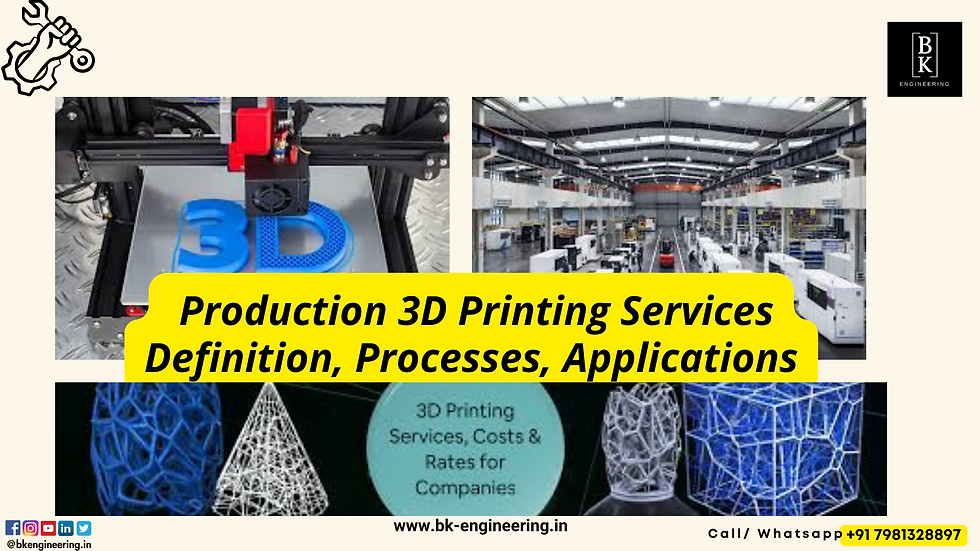
Introduction to Production 3D Printing Services
What is a Production 3D Printing Service?

Production 3D Printing Services offer on-demand manufacturing solutions using various advanced 3D printing technologies to produce functional, end-use parts in small to medium volumes. Unlike prototyping services, these services focus on consistent quality, repeatability, scalability, and industrial-grade materials suitable for final products.
Production 3D Printing bridges the gap between prototype validation and full-scale manufacturing, making it ideal for industries seeking flexibility, speed, and cost efficiency without investing in expensive tooling.
A Brief History of 3D Printing for Production
Initially limited to prototyping, 3D printing evolved with advances in material properties, machine reliability, and automation. Technologies like SLS, MJF, and FDM have matured, allowing companies to confidently produce functional components for direct end-use in sectors like aerospace, automotive, medical, and consumer goods.
How Production 3D Printing Services Work
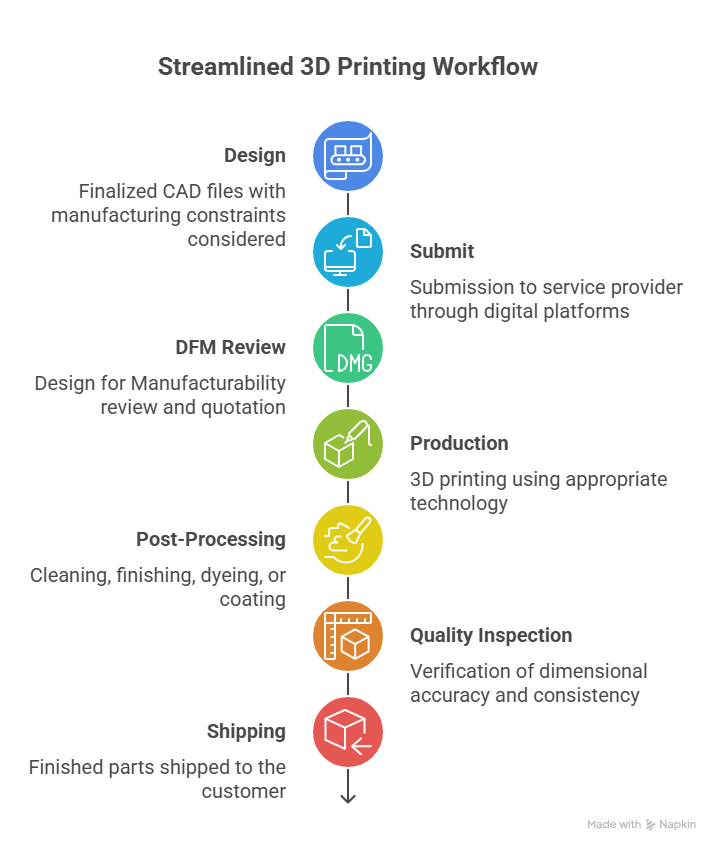
The Basic Workflow
Design finalized CAD files with manufacturing constraints considered.
Submit to a service provider through digital platforms.
DFM Review (Design for Manufacturability) and quotation by the provider.
Production using appropriate 3D printing technology (SLS, MJF, SLA, FDM, etc.).
Post-Processing including cleaning, finishing, dyeing, or coating.
Quality Inspection to verify dimensional accuracy and consistency.
Shipping the finished parts to the customer.
Key Components of a 3D Printing Service Workflow

Pre-Processing
File preparation, nesting, support generation, and material selection.
Printing Technologies Available
SLS, MJF, SLA, DMLS/SLM (metal), FDM, PolyJet, Carbon DLS, etc.
Post-Processing
Surface finishing, coloring, smoothing, heat treatments, machining.
Quality Assurance
Dimensional inspection, mechanical testing, material certification.
Types of 3D Printing Services for Production

Polymer-Based Services
Selective Laser Sintering (SLS)
Multi Jet Fusion (MJF)
Fused Deposition Modeling (FDM)
Stereolithography (SLA)
Carbon DLS / CLIP
PolyJet
Metal-Based Services
Direct Metal Laser Sintering (DMLS)
Selective Laser Melting (SLM)
Binder Jetting (Metal)
Electron Beam Melting (EBM)
Applications of Production 3D Printing Services
Aerospace & Defense
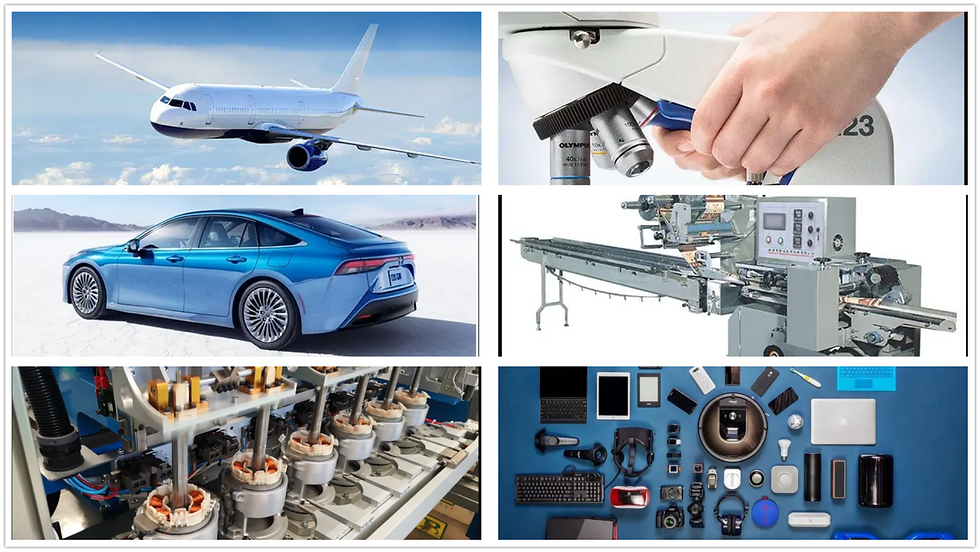
Lightweight components, ducting, brackets, UAV parts.
Automotive
Custom parts, tooling, fixtures, functional assemblies.
Medical & Dental
Implants, surgical guides, prosthetics, orthodontics.
Consumer Products
Wearables, eyewear, custom electronics housings.
Industrial Manufacturing
Jigs, fixtures, end-of-arm tooling, housings.
Robotics & Electronics
Functional enclosures, structural frames, mounts.
Advantages of Production 3D Printing Services

No Tooling Required
No upfront mold or die cost, making it ideal for low-to-medium batch production.
Rapid Turnaround
Lead times often reduced from months to days or weeks.
Design Flexibility
Complex geometries, lightweight structures, lattice designs easily achievable.
Customization at Scale
Mass customization is possible without increasing costs per unit.
On-Demand Inventory
Reduce storage by producing parts as needed.
Limitations of Production 3D Printing Services
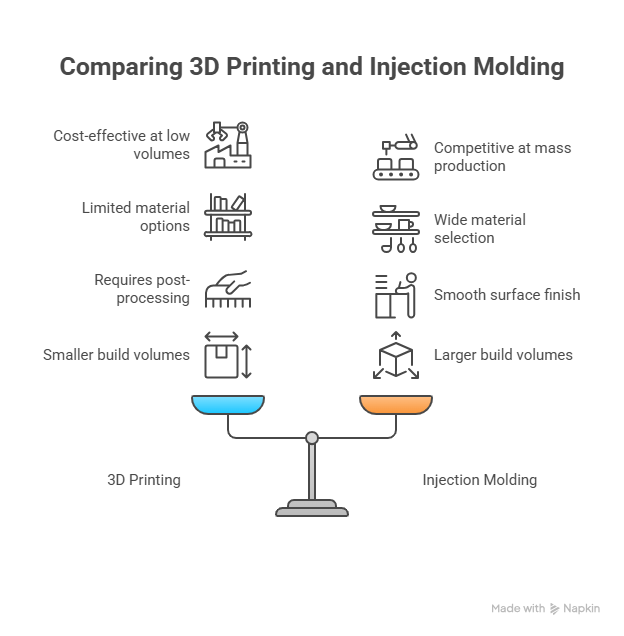
Unit Cost at Scale
More cost-effective at low-to-medium volumes, less competitive at mass production scales compared to injection molding.
Material Constraints
Limited to specific polymers and metals suitable for additive processes.
Surface Finish
Often requires post-processing to achieve aesthetic or functional finishes.
Size Constraints
Build volumes are smaller compared to traditional manufacturing methods.
Production 3D Printing vs. Traditional Manufacturing
Key Differences
Aspect | 3D Printing Production | Traditional Manufacturing |
Setup Cost | Low | High (tooling, molds) |
Lead Time | Fast | Slower (tooling + production) |
Flexibility | High | Low once tools are made |
Unit Cost | Flat (low volume) | Reduces with high volume |
Complexity | Free | Increases cost |
When to Choose 3D Printing Services
For low-volume production.
When complex geometries or lightweight designs are needed.
For functional testing, rapid iteration, and customization.
Future Trends in Production 3D Printing Services
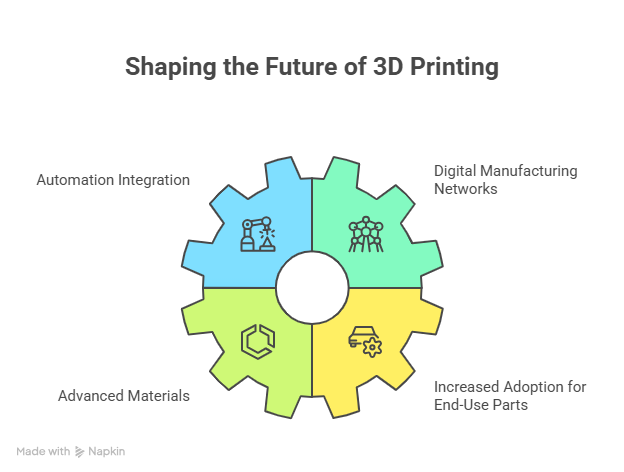
Automation Integration
Automated material handling, post-processing, and quality control.
Digital Manufacturing Networks
Connected services for on-demand, distributed manufacturing (e.g., Xometry, Protolabs).
Advanced Materials
Expansion into composites, ceramics, and high-performance polymers.
Increased Adoption for End-Use Parts
Greater use in consumer goods, healthcare, and automotive production lines.
Cost Considerations
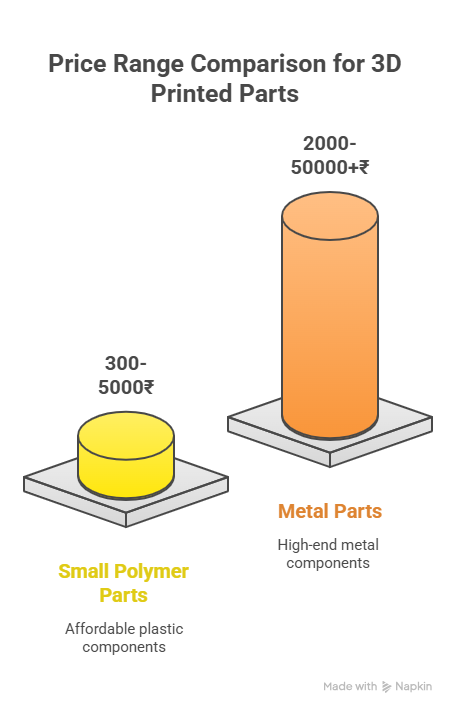
Cost Breakdown
Setup & DFM Review: Usually free or nominal for services.
Printing Costs: Based on volume, material, build time.
Post-Processing Costs: Surface treatment, dyeing, coating.
Shipping & Logistics: Depends on destination and batch size.
Typical Price Range
Small polymer parts: ₹300 to ₹5,000 per piece.
Metal parts: ₹2,000 to ₹50,000+ per piece.
Choosing the Right Production 3D Printing Service
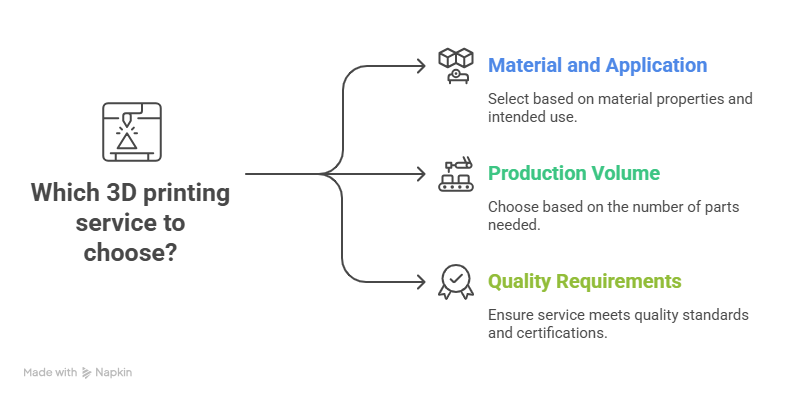
Based on Material and Application
Polymers: SLS, MJF for functional parts; SLA for detail.
Metals: DMLS, SLM for high strength and performance.
Based on Production Volume
Prototypes / Custom Parts: Single-run service.
Low-to-Mid Batch: Service with capacity for consistent repeatability.
Based on Quality Requirements
Services offering ISO certifications and quality control reports.
Tips for Using Production 3D Printing Services
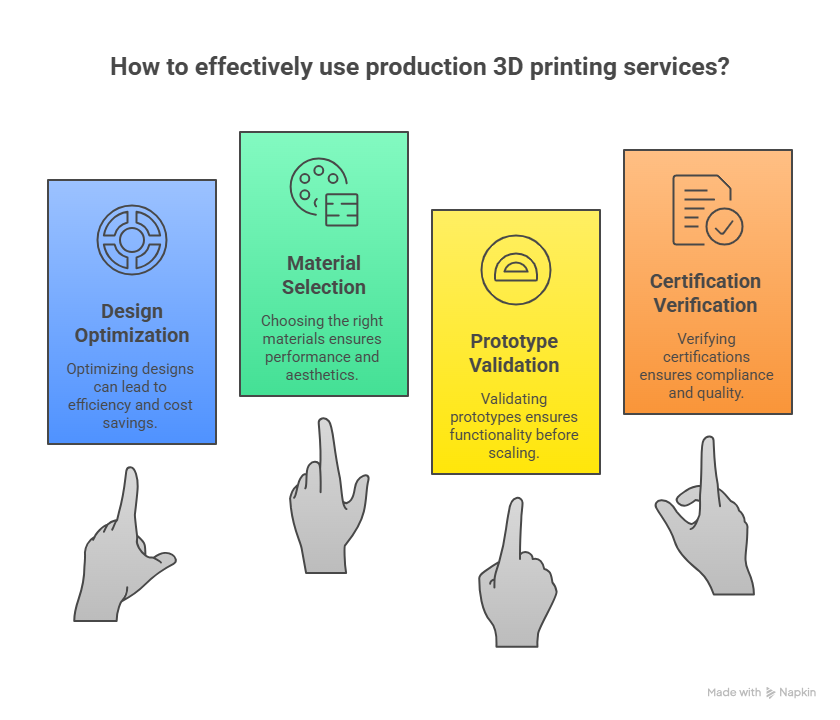
Design for Additive Manufacturing (DFAM)
Optimize designs for efficiency, weight reduction, and cost savings.
Material Selection
Choose materials that match mechanical, thermal, and aesthetic requirements.
Validate with Prototypes First
Ensure designs function as intended before scaling to larger batches.
Ask for Certifications
Look for ISO 9001, AS9100, or medical ISO 13485 compliance depending on industry.
Conclusion
Production 3D Printing Services offer flexibility, speed, and innovation for companies looking to bypass traditional manufacturing constraints. From customized parts to functional prototypes and short-run production, these services provide a scalable path for bringing products to market faster with reduced risk.





Comments